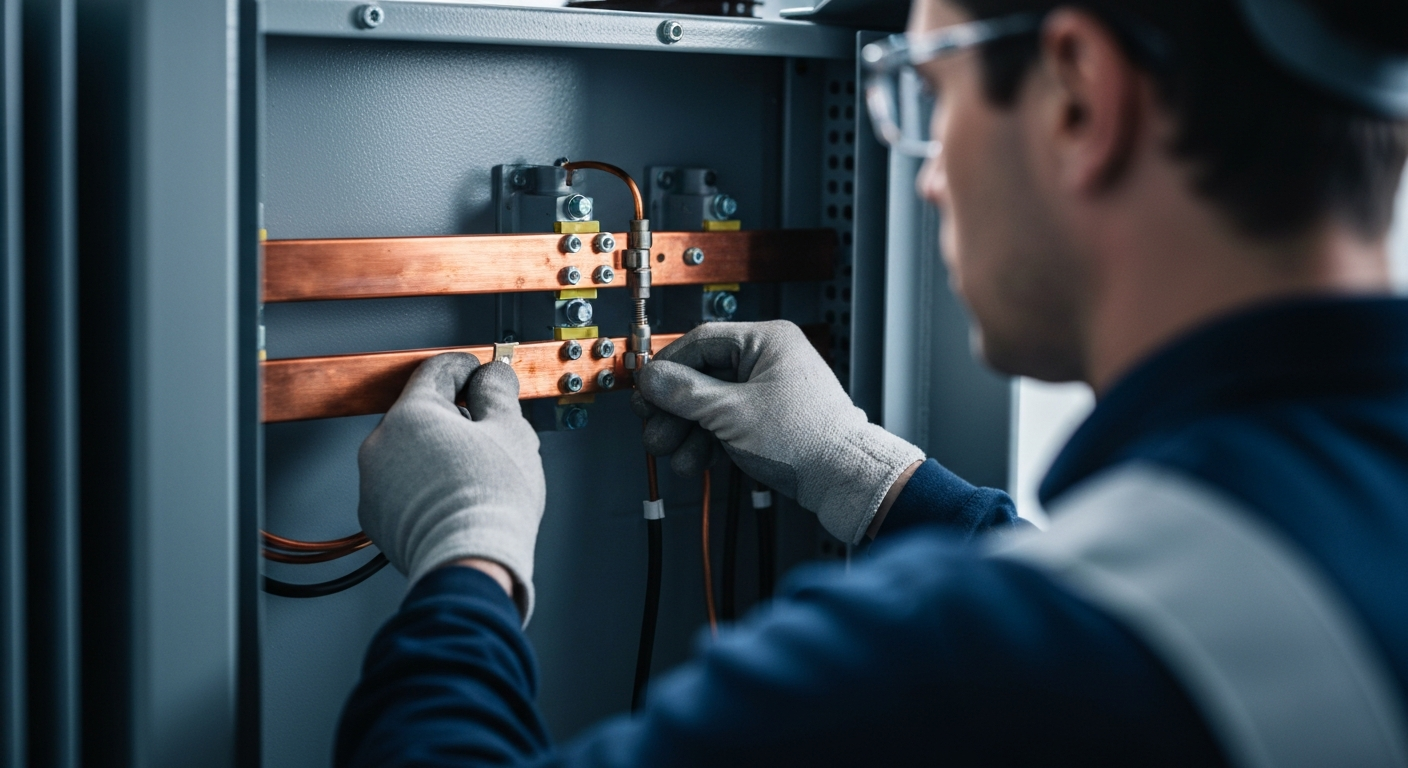
Transformer Grounding and Bonding: Mastering the Key Changes in the 2023 NEC
This article provides an industry perspective on the key updates affecting transformer installations, helping you navigate the changes and avoid common, costly mistakes.
The Core Mission of NEC Article 250: Safety and Stability
Before diving into the changes, it’s essential to remember the fundamental purpose of grounding and bonding. These rules are designed to accomplish two primary safety goals:
- Stabilize Voltage: A proper connection to earth via a grounding electrode system helps stabilize the voltage to ground during normal operation.
- Create a Fault Path: Bonding creates a low-impedance path for fault current to travel back to the source, allowing overcurrent protection devices (like breakers or fuses) to operate quickly. This is known as the effective ground-fault current path.
When these principles are compromised, especially around transformers, the results can range from equipment malfunction to catastrophic failure and electrocution hazards.
Key 2023 NEC Update: Separately Derived Systems (NEC 250.30)
One of the most crucial areas for any installer working with transformers is separately derived systems, with NEC 250.30 serving as the primary roadmap. When you install a transformer, you are often creating a new system with no direct electrical connection to the primary service conductors. This requires establishing a new ground reference for the secondary side.
A common and dangerous error is creating multiple connections between the neutral and ground, which can lead to objectionable current flowing on conductive paths and equipment. The 2023 NEC reinforces the importance of a single point of connection for the system bonding jumper and the grounding electrode conductor at the transformer. This jumper is what connects the grounded conductor (the neutral) to the equipment grounding conductor (EGC) and the enclosure. Getting this single connection right is fundamental to proper transformer secondary grounding and creating a clear path for fault current.
It’s also crucial to distinguish between the main bonding jumper at the service and the system bonding jumper at the derived system. While they perform a similar function, their locations are distinct and governed by different rules to maintain the integrity of the fault path.
A Major Practical Change: The New Rule on Ventilated Enclosures (NEC 250.64(G))
Perhaps one of the most talked-about changes impacting daily installations is the new section NEC 250.64(G). For years, it was common practice to route the grounding electrode conductor (GEC) from a dry-type transformer down through the ventilation openings in the bottom of the enclosure. It was convenient and seemed logical.
As of the 2023 NEC, this practice is now a violation. Section 250.64(G) explicitly prohibits a GEC from being installed through ventilated openings in an enclosure. The reasoning is to protect the GEC from physical damage and to prevent obstruction of airflow, which could cause the transformer to overheat. Installers must now find alternative routing paths, such as dedicated knockouts or holes drilled specifically for the conductor, ensuring it doesn’t interfere with the equipment’s designed ventilation.
Clarifying Conductor Roles for a Safer System
The 2023 NEC continues to refine the roles of different bonding conductors to eliminate ambiguity. Understanding the distinction between a supply-side bonding jumper and an equipment grounding conductor is critical for ensuring a complete and effective ground-fault current path.
The supply-side bonding jumper is installed on the supply side of a service disconnect, connecting conductive equipment to the grounded service conductor. Meanwhile, the equipment grounding conductor runs with the branch circuits and feeders, connecting the non-current-carrying metal parts of equipment back to the system’s grounding point. Sizing the equipment grounding conductor itself is another critical piece of the puzzle, with specific rules outlined in the code. For a deeper dive, it’s worth reviewing how EGC sizing and splicing rules have changed in the 2023 NEC.
The principles of establishing an effective ground-fault current path are universal, but their application can become highly specialized. For instance, the 2023 NEC also provides clarifications for equipment grounding in healthcare spaces, where sensitive electronics and patient safety demand even more stringent requirements.
Beyond the Basics: Specialized Grounding Systems
While most residential and commercial work involves solid neutral grounding, the NEC also governs more complex configurations. Understanding these demonstrates a higher level of expertise:
- High-Impedance Grounded Neutral Systems: Often found in industrial facilities where process continuity is paramount, these systems use an impedance device to limit ground-fault current to a low level. This prevents an immediate shutdown but activates an alarm, allowing for an orderly shutdown to locate and fix the fault.
- Corner-Grounded Delta Systems: In these 3-phase systems, one of the phase conductors is intentionally grounded. This configuration is less common today but still exists in older facilities. It presents unique safety hazards, as one phase conductor is at ground potential, and electricians must exercise extreme caution.
Future-Proofing Your Grounding and Bonding Expertise
The industry is moving towards more resilient and “smarter” electrical infrastructure. There is a significant trend towards using corrosion-resistant grounding materials like stainless steel or advanced composites to withstand harsh environments. Furthermore, the integration of sensor-equipped grounding integrity solutions into new smart grid and industrial projects is growing to enable real-time monitoring. While these technologies may seem high-end, they point to a future where grounding is not just a passive safety system but an actively monitored component of the grid.
Staying current with the nec 2023 grounding and bonding updates isn’t just about passing inspections. It’s about demonstrating your expertise, ensuring the safety and longevity of your installations, and positioning yourself as a professional at the top of your field. As codes and technologies evolve, ongoing education is the best tool for success. Ready to sharpen your knowledge on the latest code changes? Browse our courses to find state-approved continuing education tailored for licensed electricians.
Frequently Asked Questions (FAQs)
1. What is the main purpose of a system bonding jumper at a transformer?
The system bonding jumper creates the critical link between the grounded conductor (neutral) and the equipment grounding conductor(s) for a separately derived system. This connection establishes a low-impedance effective ground-fault current path, ensuring that a fault will trip the overcurrent protection device.
2. Can I still ground multiple separately derived systems to the same grounding electrode?
Yes, NEC 250.30(A)(4) allows for a common grounding electrode conductor for multiple separately derived systems. This can simplify installations by using a single GEC to connect to the grounding electrode system, but the sizing and connection rules must be followed carefully.
Disclaimer: The information provided in this educational content has been prepared with care to reflect current regulatory requirements for continuing education. However, licensing rules and regulations can vary by state and are subject to change. While we strive for accuracy, ExpertCE cannot guarantee that all details are complete or up to date at the time of reading. For the most current and authoritative information, always refer directly to your state’s official licensing board or regulatory agency.



